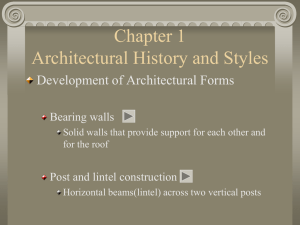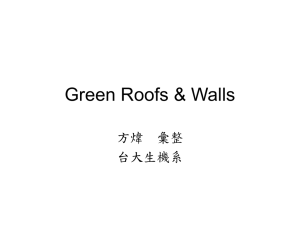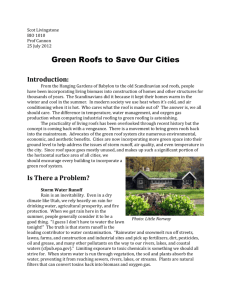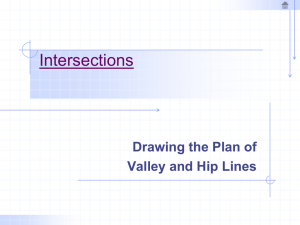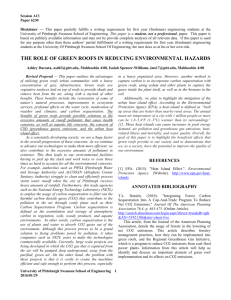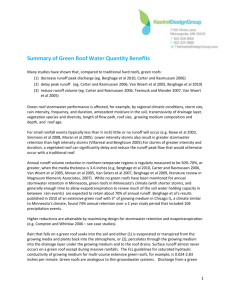Roof Access Safety Awareness Module
advertisement
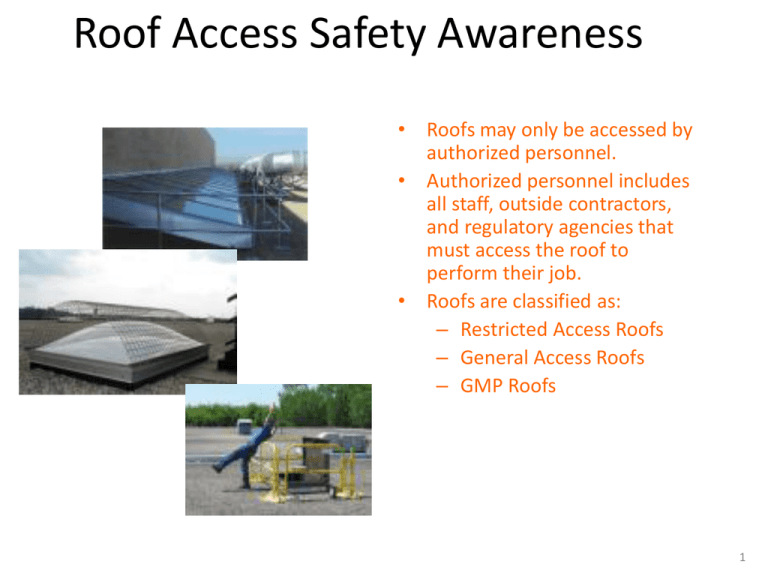
Roof Access Safety Awareness • Roofs may only be accessed by authorized personnel. • Authorized personnel includes all staff, outside contractors, and regulatory agencies that must access the roof to perform their job. • Roofs are classified as: – Restricted Access Roofs – General Access Roofs – GMP Roofs 1 Roof Hazards • Roofs may contain potential health and safety hazards which includes: – Exhaust gases – Fumes – Particles from chemical hoods glove boxes, hot water boilers, and building sewer systems. 2 Roof Hazards • Other potential hazards include falling from: – Edges of roofs – roofs or access ladders – through skylights – electrical shock – moving machinery – ionizing and non-ionizing radiation – contamination from previous operations or experiments. – Note: Skylights are windows 42 inches or lower in height and 45 degrees to horizontal angle. 3 Roof Classifications • “Restricted-Access” means exposure to hazardous materials or harmful physical agents may exceed accepted criteria or unsafe conditions may occur. • “General-Access” means only ordinary hazards associated with working at heights or with machinery are present. • “GMP” if there are GMP processes performed within the facility’s structure. The GMP classification may also be a Restricted-Access Roof. 4 Skylight Delineation • • • Roof fall hazards have been identified by delineation with yellow and black striping. Personnel should not cross striping at anytime unless using proper fall protection. Personnel required to use fall protection must attend fall protection training. – Note: Skylights are windows 42 inches or lower in height and 45 degrees from vertical to horizontal angle. 5 Guard Rail Installation • Where striping of roofs was not practical, guardrails were installed. • The configuration of the guardrails was installed depending upon the location of the hazard. • Guardrails are equipped with a top rail and mid rail where there was not a parapet. 6 Identified Anchorages • Where personal fall arrest protection is required, anchorages have been installed and are identified in Red at most locations. • Horizontal Lifelines are not marked red. 7 General Access Roof Controls • • • 8 All potential hazards of roof access shall be identified, including hazardous materials in or on a roof (or roofing material) and building operations that may pose hazards to roof access personnel, and a roofaccess classification shall be established. Appropriate safety plans and procedures shall be established before each roof access activity. Individuals accessing roofs shall be informed of all hazards, procedures, or unusual situations related to each building. • • • • • Safe egress and access routes shall be established. Ladders of fixed and portable equipment shall be inspected. Locations of safety barriers, lanyards, or slide-wire attachments for fall protection shall be determined. Protective equipment, including garments, shall be identified. All building materials or equipment removed from roofs that is potentially contaminated shall be controlled, e.g., by swiping and analysis prior to removal from an area. Restricted Access Roof Controls • • • 9 In addition to controls listed for access to General Access Roofs: A hazard evaluation, using a Job Hazard Analysis (JHA), of operations and systems in the facility that may affect worker safety on the roof shall be developed. Restricted-Access Roof notification shall be given to the F&E Manager or designee, the Facility Supervisor (FS) (or designee), and the health and safety department shall be notified as well. • • • When necessary based on the JHA, Caution signs that restrict hazardgenerating work within the building shall be placed on hoods, glove boxes and equipment during the roof access period and promptly removed when work is complete. These signs are to be posted on all equipment with any hazard potential for roof access workers or building employees. Signage must be posted on the equipment in such a way that the work area is clearly labeled and accidental usage of such equipment would be highly unlikely. Restricted-Access Roof Controls (continued) • • • 10 A yellow chain, with a suspended sign that can be draped across the hood face, glove position or hazard producing device control panel is recommended. Positive measures to control unauthorized access to restrictedaccess roofs shall be established (e.g. locked doors, ladder locks, etc.). A Sign In/Out Procedure shall be established such as a logbook, white board, or chalkboard for each worker to sign in and out when accessing or vacating rooftops. • • The sign in/out device shall be placed at the roof-access point or other central location so that no one is inadvertently locked onto a roof. Communication devices such as Nextels, Radios, or Cell Phones should be carried by roof workers in the event there is an or incident involving medical emergency, hazardous material release, or other issue requiring immediate attention by SES, EHS, or F and E personnel. Accessing GMP Roofs • In addition to controls listed for access to Restricted Access Roofs, the following additional controls shall be implemented: Coordination with Laboratory Management and/or FPOC prior to accessing GMP Roofs. Identifying all potentially affected GMP equipment and locations. • Ensure that no non-conformance may result from planned roof work. 11

